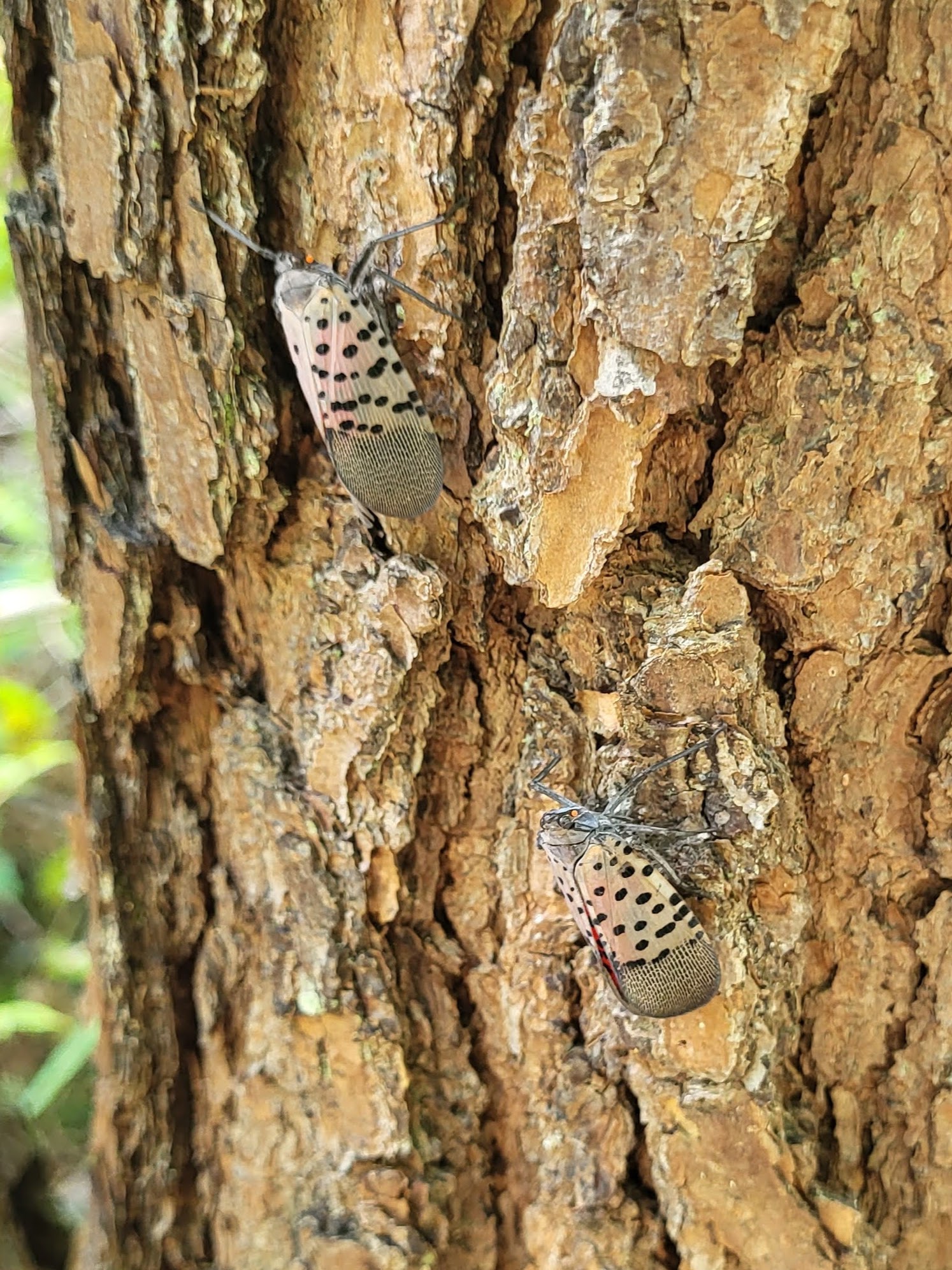I was too slow, so two spotted lanternflies escaped while I first photographed them (below), then doubled back to possibly smash the two against the tree. I am not in the habit of squashing bugs, though I am far less tolerant with pesky flies and mosquitoes when they’re attacking me.

Local authorities ask that lanternflies be murdered on sight to protect agricultural crops, though no one seems to think they’ll be much of a problem in ornamental gardens. Thus, my urgency was not high, and these and a bunch of their buddies were spotted in a forest eight or nine miles from home. I followed through to report the little guys through the proper channels, though I suspect with the nearby presence of a sticky trap that they had already been reported.
I recently noted the absence of aphids on the milkweeds (Asclepias), and again this year there are no tent caterpillars while I see many in trees in neighboring properties. It seems that every other insect is present (and welcomed) in the garden. After many weeks, the large patch of mountain mint (Pycnanthemum muticum) has quieted down. Still, a number of various bees and wasps visit the fading flowers, but the numbers are fewer in the past week.

By my unscientific observation in the past ten years, I have witnessed a decrease in the garden of the few insects that could be considered pests. Though counter intuitive at first thought, halting the use of insecticides many years ago at first encouraged fall webworms and other caterpillars that damaged tree foliage. But then, birds and other predators went to work, at least I suppose that’s the reason for the decline, while there has been an increase in pollinating insects not consumed by birds as the garden has matured.

The current pollinator highlights are the blue mist shrubs (Caryopteris, above and below). All are at peak bloom, and even the tiny flowers of the variegated ‘Snow Fairy’ (Caryopteris divaricata ‘Snow Fairy’, below) hidden behind mounds of taller foliage are buzzing at the moment. I have noted that ‘Snow Fairy’ should be relocated to a more visible spot after it goes into dormancy this autumn. I haven’t a clue where it will fit, but there’s someplace. I’ll work it out.

The toad lilies (Tricyrtis, below) seem to be a bit slow coming into flowers with this late summer heat, though I can see buds swelling and scattered blooms. This is an interesting flower for fat carpenter bees that cannot fit into the cone shaped bloom, so they chew through the outer base of the flower. The enjoyment of the garden is not only its colorful blooms, but also watching the wildlife and the seasonal changes as pollinators shift from one flower to another.
